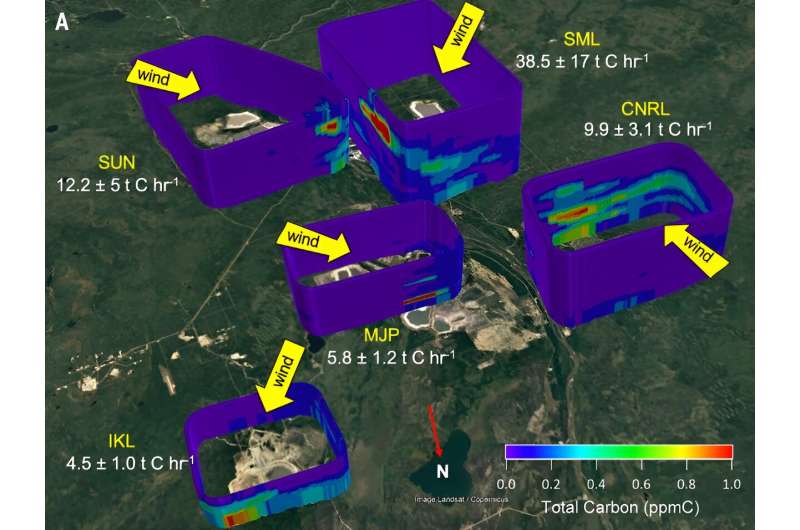January 26, 2024 report
This article has been reviewed according to Science X's editorial process and policies. Editors have highlighted the following attributes while ensuring the content's credibility:
fact-checked
peer-reviewed publication
trusted source
proofread
Study shows much more pollution leaking into atmosphere from oil sands operations than thought

An international team of chemical and environmental engineers has found that oil sands operations in Canada are emitting significantly more pollutants into the air than previously thought. In their study, reported in the journal Science, the group collected air samples using airplanes and tested them in their lab.
Canada's tar sands hold huge deposits of heavy crude oil (embedded in bitumen), which, over the past decade, have become a major oil production source. Oil sands extraction has led to calls for more governmental oversight as the practice is particularly dirty. In this new effort, the research team found levels of toxic emissions from extraction operations to be much higher than has been thought.
Up until now, testing for air pollutants emitted by oil extraction operations has mostly been done by creating models based on limited data provided by the oil companies. For this new study, the researchers took a more pragmatic approach, collecting air samples by flying over multiple extraction operations in an airplane. They then brought the samples to a lab where they were tested for pollutant levels.
Analysis of the samples showed that toxic emissions in the samples were on average 1,900% to over 6,300% of levels reported by standard methods. The researchers point out that such levels indicate that air pollutants released by extraction of bitumen from oil sands are equivalent to all other sources of similar emissions across Canada combined.
Extraction involves injecting steam into the ground, which melts the hydrocarbons, allowing them to be pumped to the surface—a method that emits a host of gaseous organic carbon compounds—many of which are known to cause health problems. Some of the compounds can also make their way higher into the atmosphere, leading to the formation of ozone and other aerosols that can contribute to global warming.
The research team has contacted the Canadian Environment and Climate Change ministry to inform them of their findings.
More information: Megan He et al, Total organic carbon measurements reveal major gaps in petrochemical emissions reporting, Science (2024). DOI: 10.1126/science.adj6233
Journal information: Science
© 2024 Science X Network





















